Axolotl - Definition, Examples, Quiz, FAQ, Trivia
Discover the Mexican salamander that can regenerate almost anything!
What is an Axolotl?
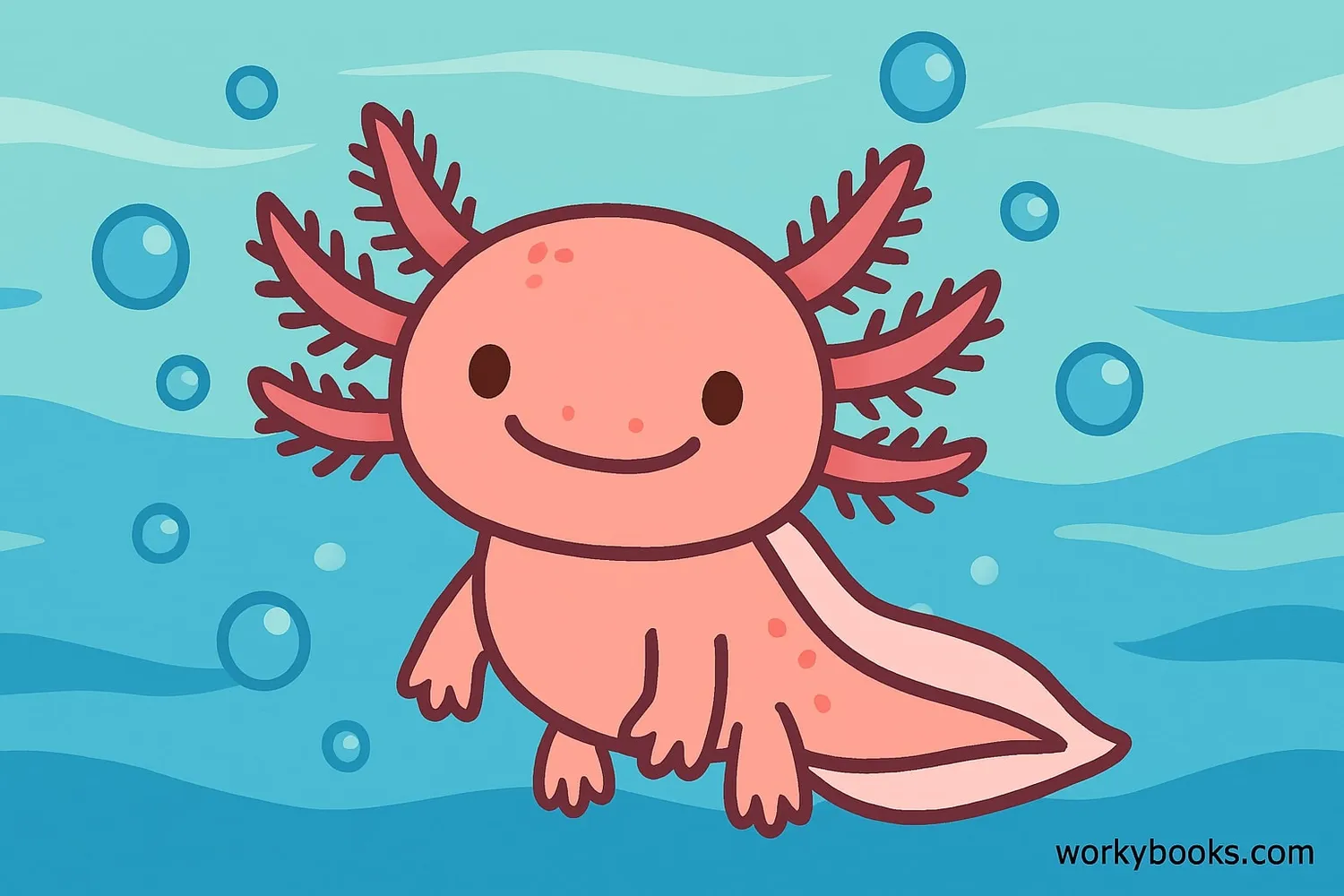
Axolotls (pronounced ACK-suh-LAH-tuhl) are fascinating amphibians often called "Mexican walking fish," but they're actually salamanders! These amazing creatures have some special features:
Neoteny
They keep their larval features throughout life, including external gills
Colors
Come in various colors like wild, leucistic (pink with black eyes), golden, and more
Size
Grow 6-18 inches long, about the size of a banana when fully grown
Lifespan
Live 10-15 years with proper care
Unlike other amphibians, axolotls never undergo complete metamorphosis. This means they remain aquatic their whole lives and keep their feathery gills. Their name comes from the Aztec language Nahuatl and means "water monster" - but they're actually gentle creatures!
(Dark with spots)
(Pink with black eyes)
(Yellow-gold)
(All black)
(Gray without yellow)
Amazing Regeneration Powers
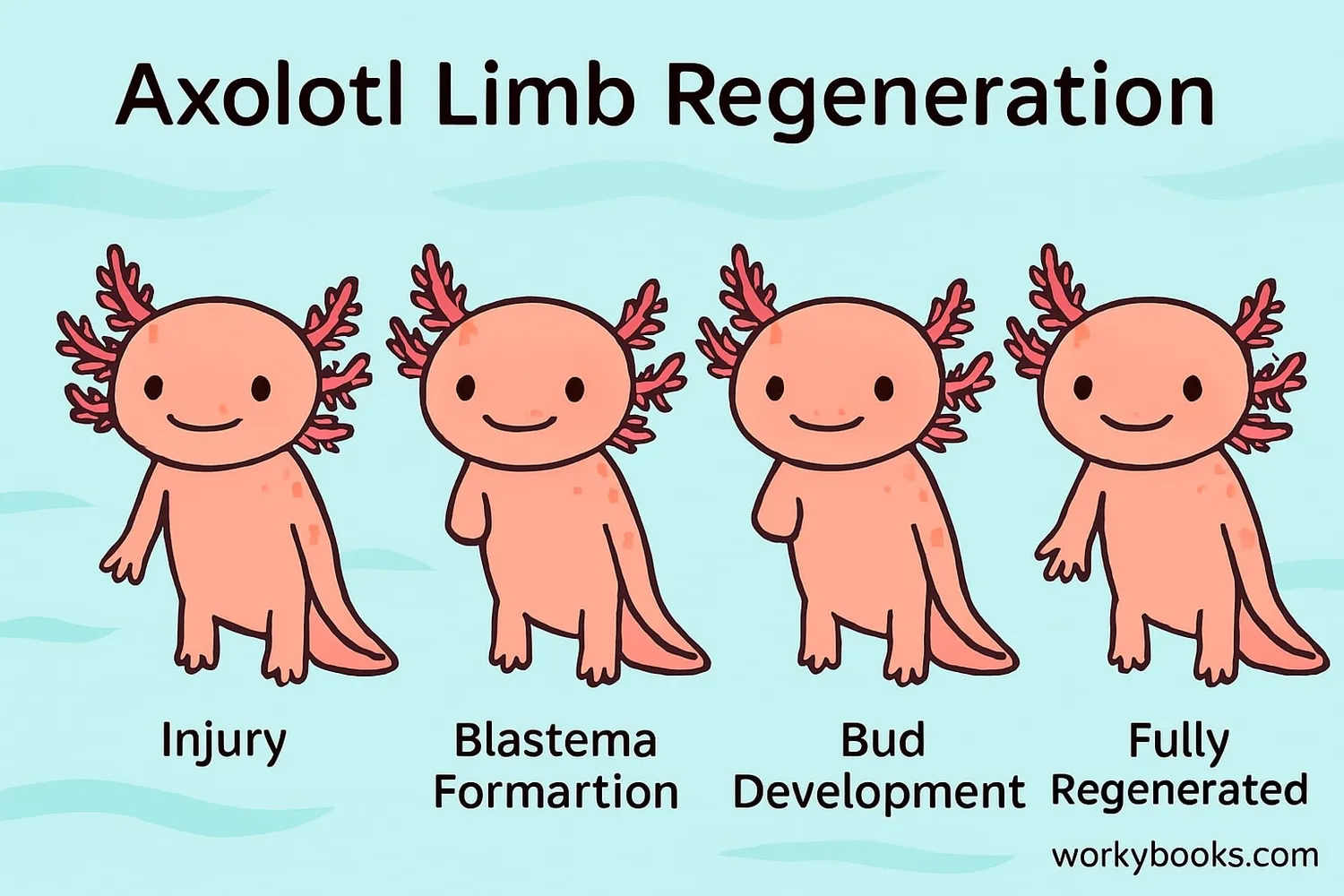
Axolotls have the incredible ability to regenerate lost body parts! This makes them one of nature's most remarkable creatures:
Regeneration Superpowers!
Axolotls can regenerate the same limb up to 5 times perfectly, and each regeneration is just as good as the original!
What they can regenerate:
• Limbs (legs and tail)
• Spinal cord
• Heart tissue
• Parts of their brain
• Jaw and facial structures
Scientists study axolotls to understand regeneration better. This research might one day help humans heal from injuries without scarring!
Step 1: Injury
A limb gets injured or bitten off
Step 2: Healing
Skin quickly covers the wound
Step 3: Blastema
Special cells form a regeneration bud
Step 4: Regrowth
New limb grows in 1-2 months
Natural Habitat
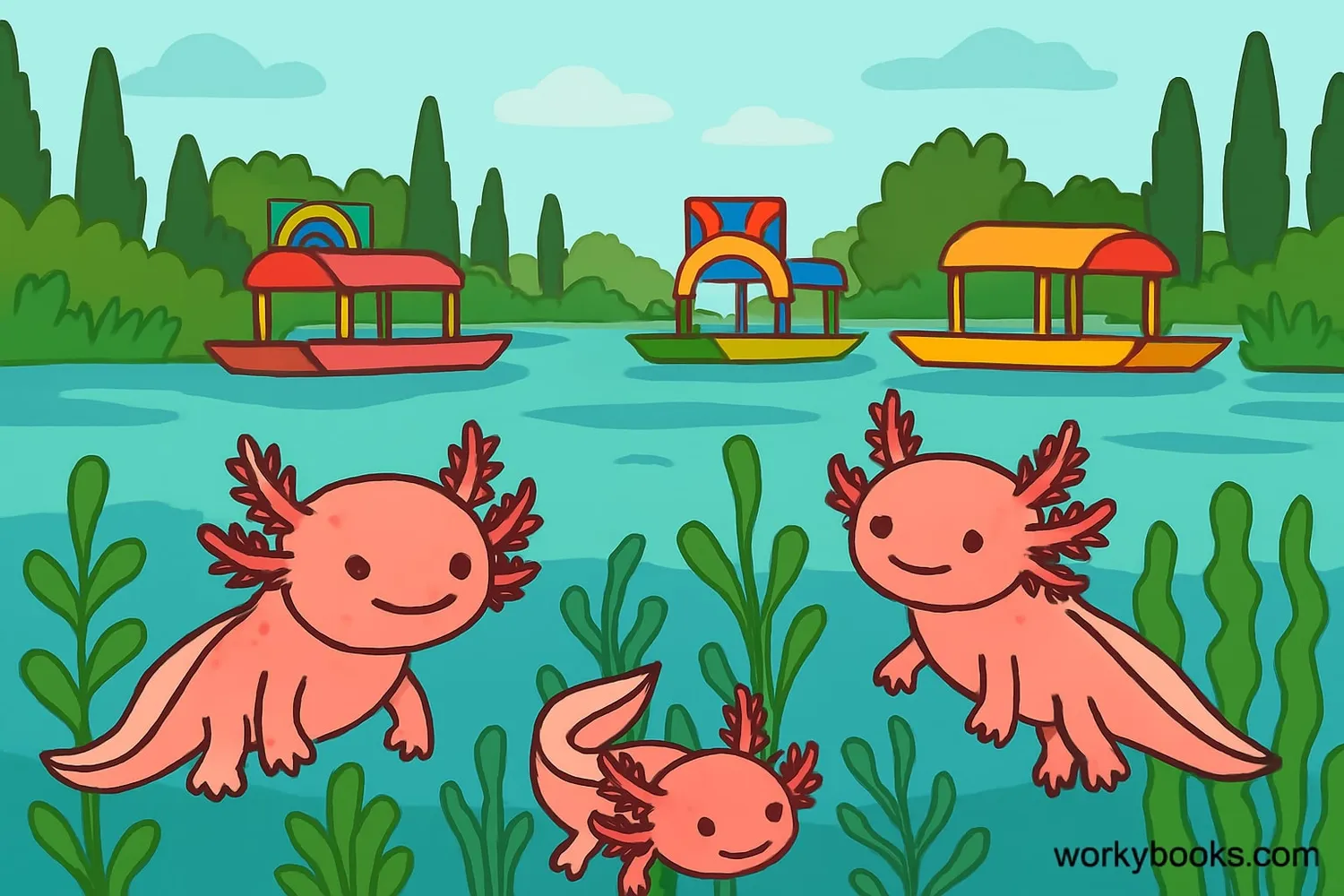
Axolotls come from just one place in the world - the lake complex of Xochimilco near Mexico City. This unique habitat has:
High-altitude Lakes
Located 7,000 feet above sea level
Cool Water
Water temperature between 60-64°F (16-18°C)
Aquatic Plants
Dense vegetation for hiding and breeding
Unfortunately, this habitat has shrunk dramatically due to urbanization and pollution. What was once a large lake system is now mainly canals covering about 10% of its original size. Conservation efforts are underway to save this unique ecosystem and its remarkable inhabitants.
Unique Ecosystem
Lake Xochimilco is the only natural habitat of axolotls and is recognized as a UNESCO World Heritage Site!
Axolotl Care as Pets
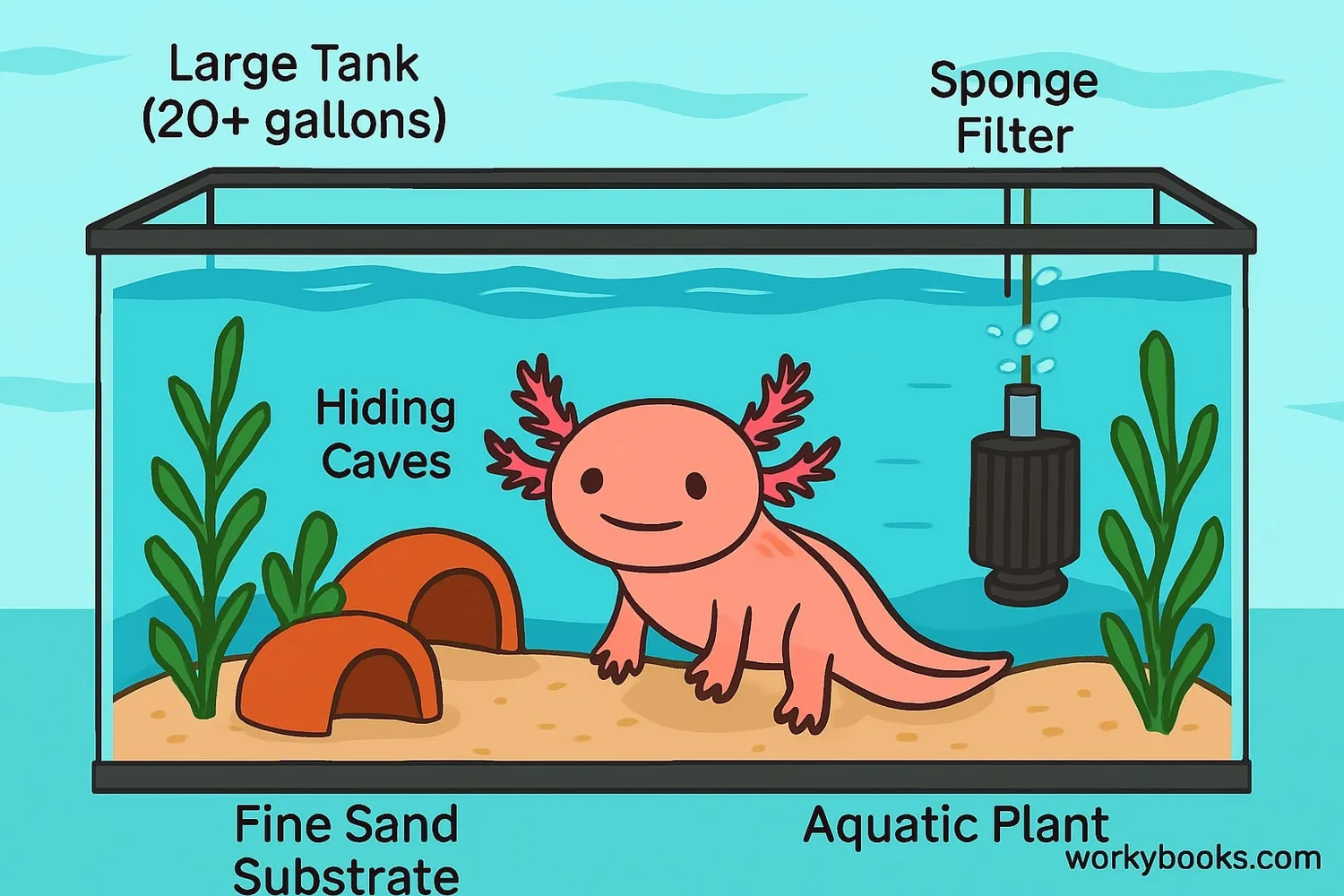
Axolotls can make fascinating pets, but they require special care. Here's what you need to know:
Tank Setup
20+ gallon tank with fine sand substrate (never gravel!)
Water Quality
Cool, clean water (60-64°F) with gentle filtration
Diet
Carnivorous - eat worms, insects, special pellets
Tank requirements:
• Minimum 20-gallon tank for one adult
• Fine sand substrate (gravel can be swallowed and cause problems)
• Gentle filtration (sponge filters are ideal)
• Hiding places (caves, PVC pipes, plants)
• No tank mates (they might nip gills or get eaten)
Feeding:
• Earthworms (main diet)
• Bloodworms (treat)
• Special axolotl pellets
• Occasional small fish or shrimp
Remember: Axolotls are sensitive to water quality and temperature. They should never be handled as it damages their sensitive skin!
Why Are Axolotls Endangered?
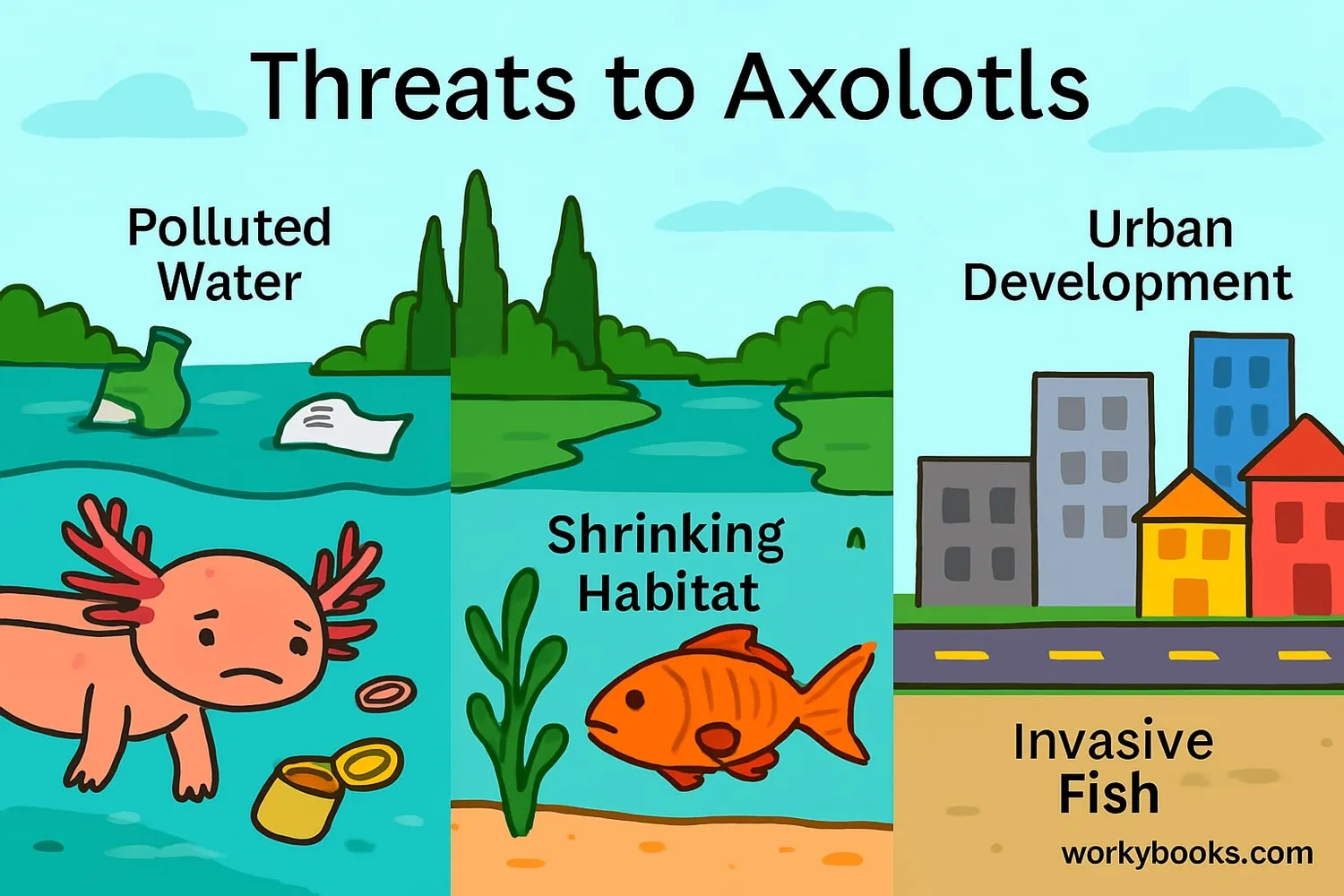
Axolotls are critically endangered in the wild. The IUCN Red List estimates fewer than 1,000 remain in their natural habitat. Here's why:
Habitat Loss
90% of their lake habitat has been drained for development
Invasive Species
Tilapia and carp eat axolotl eggs and compete for food
Water Pollution
Contamination from Mexico City affects water quality
Conservation efforts are underway to save axolotls:
• Creating protected areas in Lake Xochimilco
• Breeding programs in zoos and research centers
• "Chinampa" restoration - rebuilding traditional floating gardens
• Education programs for local communities
Scientists estimate axolotls could disappear from the wild within 20 years without intervention. Many hope that captive breeding programs can help preserve this unique species.
Hope for Axolotls
There are more axolotls in captivity around the world than remain in the wild, giving hope for their survival as a species.
Axolotl Knowledge Quiz
Test what you've learned about these amazing creatures! Answer all 5 questions to see how much you know.
Axolotl FAQs
Here are answers to common questions about axolotls:
Amazing Axolotl Trivia
Discover some fascinating facts about axolotls!
Scientific Superstars
Axolotls are one of the most studied salamanders in science. Their regeneration abilities make them valuable for medical research on wound healing and regrowing human tissues.
Cultural Importance
In Aztec mythology, the axolotl was associated with the god Xolotl, who transformed into an axolotl to avoid sacrifice. This connection made them spiritually significant in ancient Mexican culture.
Popular Pets
Despite being critically endangered in the wild, axolotls are popular pets worldwide. They were first brought to Europe in 1864 and have been kept in laboratories and homes ever since.
Genetic Giants
Axolotls have a genome 10 times larger than humans! Their DNA contains about 32 billion base pairs compared to our 3 billion, making them one of the largest genomes ever sequenced.


